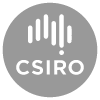Team Numnuts answers 10 frequently asked questions
Visiting agricultural events and shows, Team Numnuts has plenty of discussions with sheep producers keen to know more. Some people are surprised to learn that Numnuts is designed for tail docking as well as castration.
We’d like to take this opportunity to clear up some points about how Numnuts compares with other tail docking methods by answering some frequently asked questions.
1: How does Numnuts tail dock?
The Numnuts device uses rubber Elastrator rings for tail docking lambs. Our tool is easier to use than traditional pliers, both when applying the ring and removing it from the tool. With a quick press of the button, the device provides a shot of NumOcaine local anesthetic that is scientifically proven to alleviate the majority of pain associated with ring application.
2: How fast is Numnuts to use for tail docking?
Producers find that after a couple of practices, they can really pick up speed using the device for lamb marking. That’s no accident, as our engineers refined the design to ensure injecting NumOcaine and applying ring is a quick, clean and accurate process.
3: How quickly does the local anaesthetic work?
There’s no need to wait for it to start working. NumOcaine creates a safe anesthetic effect within 1 minute of being injected into the tail joint. This is before the lamb’s pain starts, which happens about 5 minutes after the ring is applied. By that time, the lamb is out of the cradle and back in the pen.
4: Which method is more reliable?
Numnuts delivers a consistent 1.5ml dose of NumOcaine into the base of the tail. Our engineers created a design that makes it easier to be accurate than inaccurate when injecting the tail.
By comparison, hot irons come with variable temperatures, meaning tail removal and cauterization may be completed inaccurately, causing more pain. Incomplete cauterization by hot knives on windy days can lead to bleeding, infection, and in some cases death.
5: Which tail docking method is least painful for lambs?
Numnuts with NumOcaine is definitely the method that minimises pain and is best for animal welfare and ethical farming. With rings, the lamb feels most pain within the first 30 minutes, and that’s when NumOcaine is doing its job. On the other hand, the hot knife creates more pain in the cradle (which is why lambs vocalise more). The nerve endings are briefly numbed by the cut, until the pain of cauterization, which is actually a serious burn, begins.
6: Is using Numnuts more humane than the knife?
Absolutely! Searing the wound with a hot knife may stop the wound bleeding, but it also gives the lamb a third degree burn that is incredibly painful. If you’ve even so much as burned your forearm before, you’ll know how that pain goes on.
7: How reliable are the rings themselves?
We recommend only buying quality rings. You can purchase these at the same time as NumOcaine, whether you’re buying via your vet, our website or your rural store. Always avoid cheap unbranded rings that are of poorer quality.
8: Does the tail docked with Numnuts look good?
It looks good when removed correctly at the third palpable joint, in line with AWI guidelines. We know that some producers use the knife to produce a shorter tail for the show ring, but NZ researchers have found this increases the risk of carcinoma of the vulva.
9: Is ring marking healthy for the lambs?
It’s definitely healthier than other approaches. With ring marking, constriction stops the tail’s circulation within the first hour. After that, there’s no blood flow to carry bacteria into the body. On the other hand, if a knife’s not hot enough or is used incorrectly, it can leave an unprotected wound that’s definitely an infection risk.
10: What happens to the lambs’ tails in the paddock?
Tails fall away within about 2-3weeks. By this time, there’s little left but fleece. The quality brand rings that we recommend are made of a very small volume of biodegradable rubber that quickly breaks down into the soil.
We hope this answers your questions about tail docking with Numnuts and NumOcaine.



